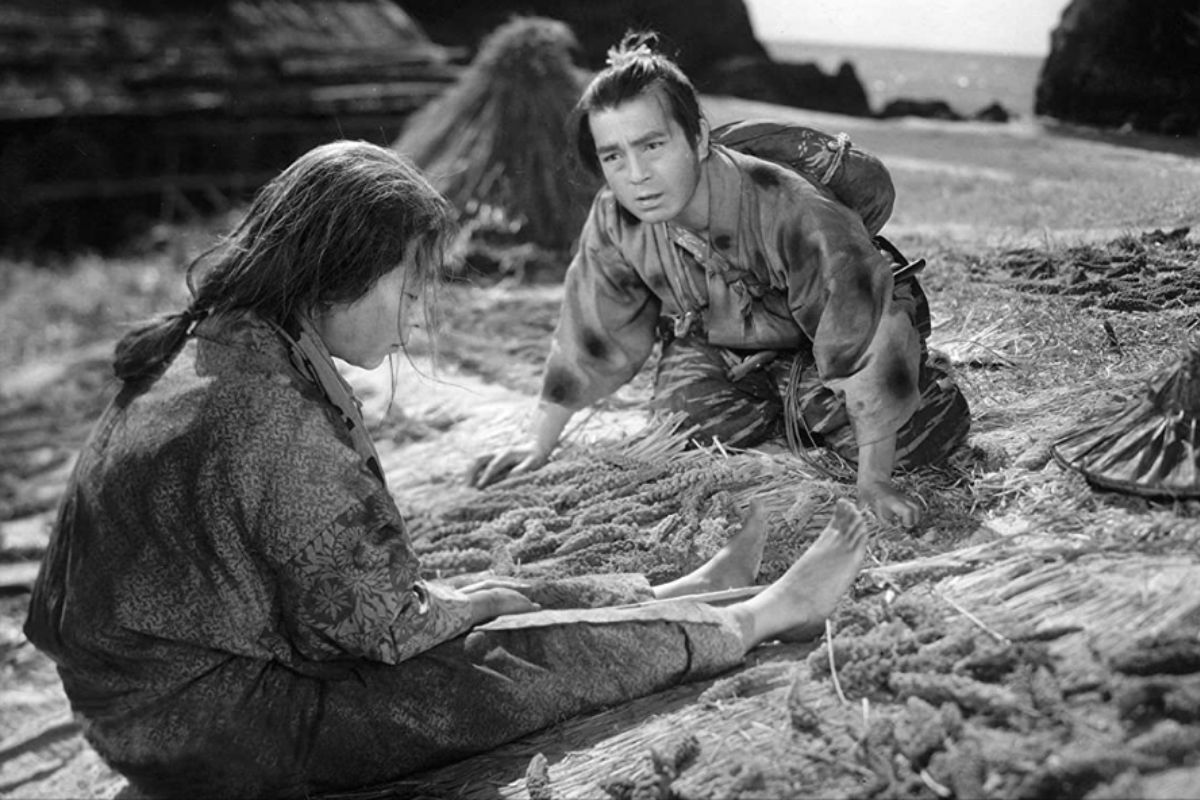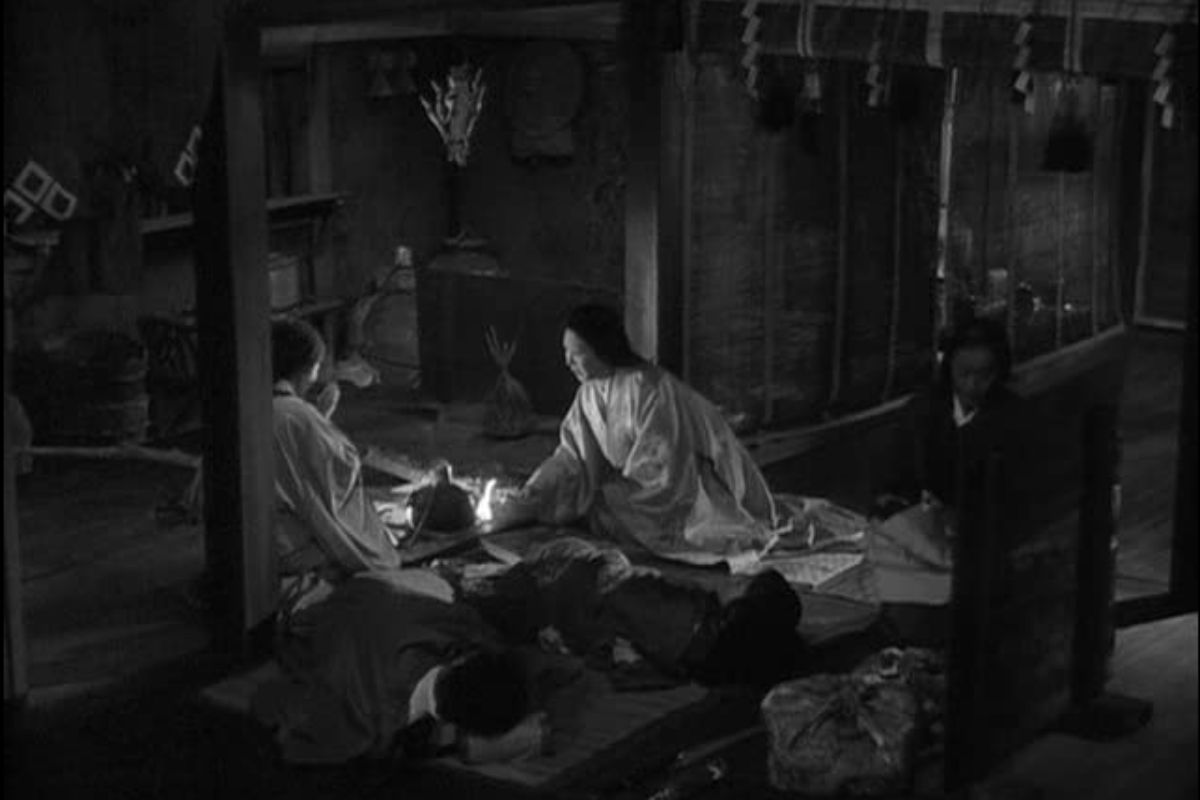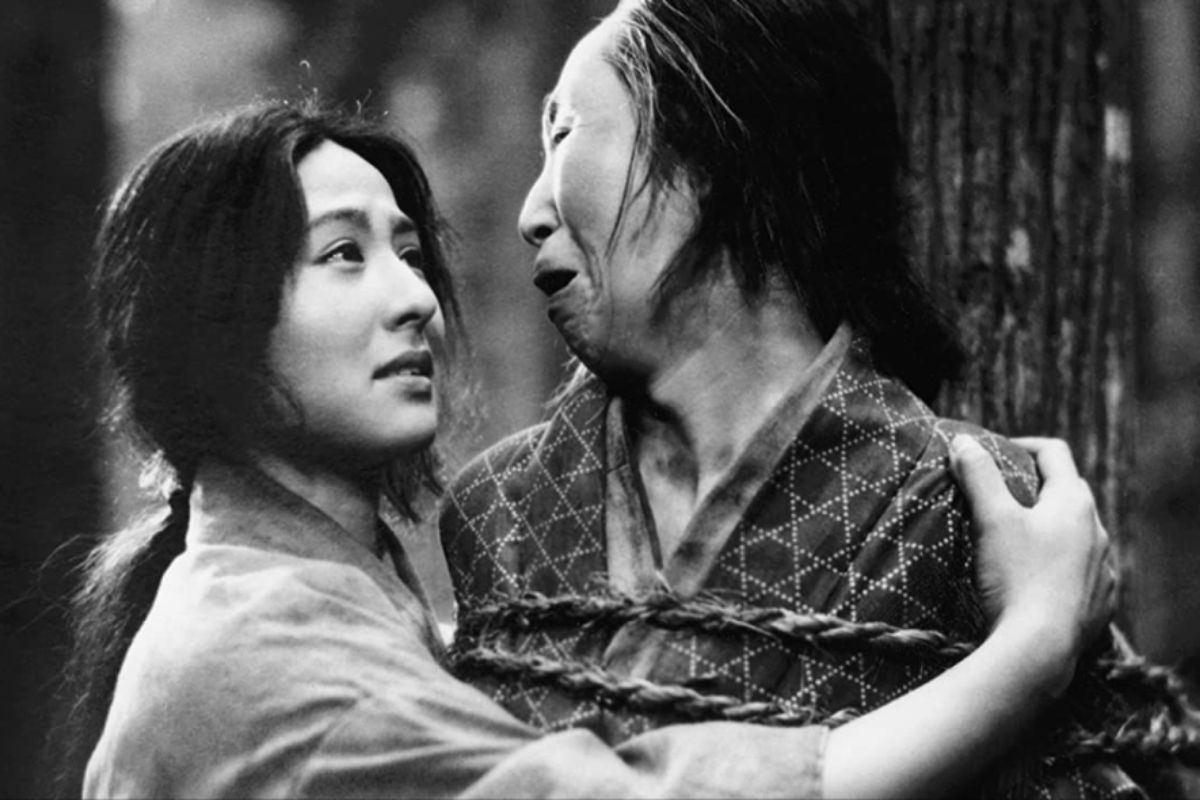The 1954 Japanese Jidaigeki film is based on a 1915 short story by Mori Ōgai, which again is based on a folktale. Distributed by Daiei Film or the important studio of the postwar Golden Age of Japanese cinema producing masterpieces, the film stars Kinuyo Tanaka, Yoshiaki Hanayagi, Kyōko Kagawa, and Eitarō Shindō. Kenji Mizoguchi directed the film.
Sansho the Bailiff analysis: What happened in the film?

The story depicts the eleventh century in the Heian period of Feudal Japan. Like the tragic characters with godly features suffers in the fallen society similarly, in the very opening of the play, we have a governor with a generous heart who is wrongfully blamed, especially for being on the side of good and virtue and is banished to a far-off province by a feudal lord.
He told his wife Tamaki to live with her brother to keep his family safe from further suffering. As directed by her husband, Tamaki and her children, Zushiō and Anju, start their journey. On their journey, they faced a horrible incident that changed the life of the three travelers.
Fallen in a trap of a priestess, Tamaki is forcefully sold into prostitution in Sado, whereas the children are sold as slave traders to a manorial estate. Sanshō is in charge of the estate, and he does his work perfectly by using the complex works of the laborers. He hardly has any humane feelings for the workers.
However, as against the father, Taro seems just the opposite image; he is as kind-hearted as his Sanshō is stone-hearted. Because of his kindness and appropriate decision, the children survive in such a hostile atmosphere.
After many years, the children grow up and are strong and mature enough to return to their parents. However, while Anju still remembers her father’s saying, “Without mercy, man is like a beast. Even if you are hard on yourself, be merciful to others”, Zushiō seems to forget everything and harden his heart.
One day Anju heard a song (having Anju and Zushiō’s names) by a new slave girl from Sado by which she is convinced that their mother is alive and still waiting for them. In the meantime, a worker in the estate named Namiji falls acutely ill, and Zushiō is ordered to take her to the wilderness to die there.
In the wilderness, Zushiō reminds them of their childhood, changes his mind, and asks Anju to escape. Anju, instead, asks her brother to take Namiji with him and assures him that she will distract the guards.
Going beyond the law, Zushiō issues an edict forbidding slavery and searches for her sister in Sanshō’s estate. Still, he knows his sister’s sacrifice significant to save her brother. After much struggle, he becomes Governor of Tango in the course of time.
He then leaves his position, wealth, and everything and searches for his mother in Sado. In the end even meets with his blind mother, who hunts for her children yet can’t recognize Zushiō.
Sansho the Bailiff themes: Why Sanshō? Why the Bailiff?

Delving into history, we can find the pathetic condition of Japan in terms of slavery. Beginning as early as the 3rd century, traces of slavery can be found while having the peak time in the later part of the twentieth century.
It’s not just children and persons sold as laborers and enslaved people. The women are also sold as sex slaves, which can be found in this film.
Thus, this official bailiff who is to maintain the law goes against it by aptly bringing the whole theme to the film’s title.
Mizoguchi through the lenses

Apart from the theme of slavery in the film from the beginning, the philosophical quest and women’s empowerment are also present. Even after all the suffering, the family doesn’t cease to go against the path of morality or virtue.
About the empowerment of women from the start of the movie, we find Tamaki is left alone for specific issues with her children, and she has to take the responsibility of taking her children to that distant place.
And in the second part, Anju takes the tough decision and responsibility to free her brother from slavery. Therefore, even if it’s the idealistic man who brings the law to forbid slavery yet, it’s the thoughts and decisions of the female characters in the film for which the story proceeds.





